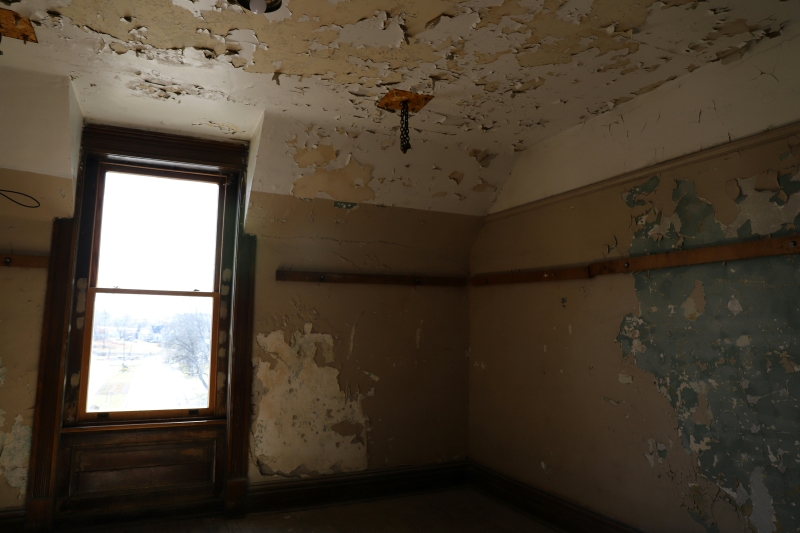
At Paul Davis Restoration of Boise, we’re all too familiar with the challenges homeowners face when dealing with mold. It’s a common issue, yet understanding how mold spreads throughout a house can be perplexing. Our goal is to shed light on this topic, empowering you to maintain a healthier living environment and know when it’s time to call in the experts.
The Basics of Mold Growth
Mold thrives in moist environments. It begins as tiny spores that, when landing on damp surfaces, start to grow and multiply. Common sources of moisture that can lead to mold include leaks in roofs, windows, or pipes, and areas with flooding. It’s crucial to address these moisture problems promptly to prevent mold from taking hold.
How Mold Spreads Throughout a House
Mold spreads by releasing spores into the air, which can easily move through your home via air currents, HVAC systems, or on clothing and pets. Once these spores find a new moist spot, they settle down and start a new colony. Let’s break down the key areas and factors contributing to mold spread:
Moisture: The Primary Culprit
Without moisture, mold cannot grow. High humidity levels, water leaks, and condensation are prime contributors to mold proliferation. Regularly check your home for signs of moisture and address any leaks or dampness immediately.
HVAC Systems and Mold Spread
HVAC systems can either help control mold by reducing humidity or contribute to its spread by circulating mold spores throughout the house. Ensure your HVAC system is well-maintained and use high-efficiency particulate air (HEPA) filters to capture mold spores.
Hidden Mold: Out of Sight, Not Out of Mind
Mold often grows in hidden places — under carpets, inside walls, or above ceiling tiles. These hidden molds can release spores, causing widespread mold growth without your knowledge. Regular inspections can help identify these hidden molds before they become a bigger issue.
Preventing Mold Spread in Your Home
Preventing mold spread starts with controlling moisture levels. Here are some proactive steps you can take:
- Ventilation: Ensure your home is well-ventilated, especially in high-moisture areas like kitchens and bathrooms.
- Dehumidifiers: Use dehumidifiers in damp areas to keep humidity levels under control.
- Prompt Repairs: Fix leaks and dry water-damaged areas within 24-48 hours to prevent mold growth.
- Regular Cleaning: Clean and dry areas prone to moisture regularly, such as shower stalls and kitchen sinks.
When to Call Paul Davis Restoration
If you suspect mold is spreading throughout your home, it’s crucial to act swiftly. Our team at Paul Davis Restoration of Boise specializes in mold remediation services. We have the tools and expertise to identify mold sources, contain the spread, and remove mold safely from your home, ensuring the health and safety of your family.
Keeping Mold at Bay
Understanding how mold spreads and taking proactive measures to prevent its growth are key to maintaining a healthy home environment. Remember, moisture control is the most effective way to prevent mold spread. If you’re faced with a mold issue that feels out of control, it’s time to reach out to the restoration professionals at Paul Davis Restoration of Boise. We’re here to help restore your home and peace of mind.
Experiencing mold issues in your home? Don’t wait for it to spread further. Contact Paul Davis Restoration of Boise today to learn more about our mold remediation services and how we can help you reclaim your healthy home environment.
Related Questions
How quickly can mold spread in a home?
Mold can start to grow within 24-48 hours under the right conditions. Once established, it can spread rapidly throughout a home, depending on moisture levels and available food sources.
Can mold in one room spread to other parts of the house?
Yes, mold can spread from one room to other parts of the house through air currents, HVAC systems, and even on clothing or pets.
Are there any health risks associated with mold exposure?
Yes, mold exposure can lead to various health issues, especially for those with allergies, asthma, or compromised immune systems. Symptoms can include coughing, sneezing, throat irritation, and in severe cases, respiratory infections.
What’s the best way to reduce humidity levels at home?
Using dehumidifiers, ensuring proper ventilation, fixing leaks, and drying wet areas promptly are effective ways to reduce humidity levels and prevent mold growth.
